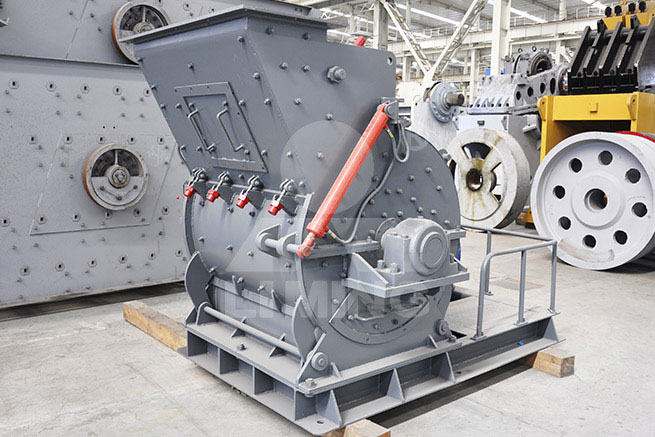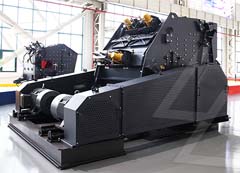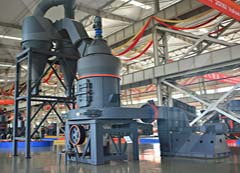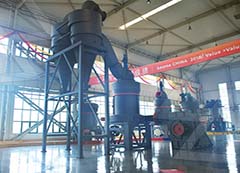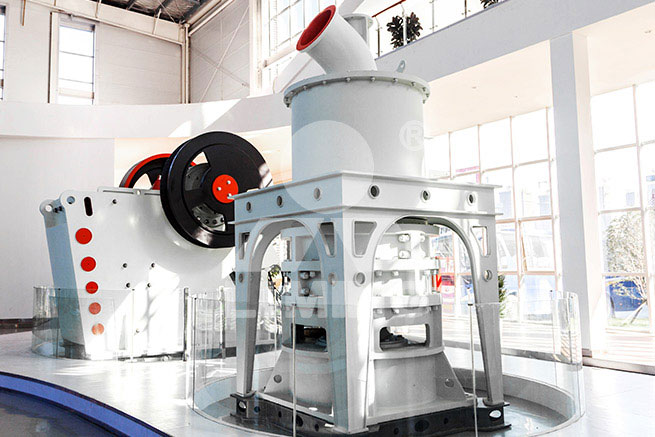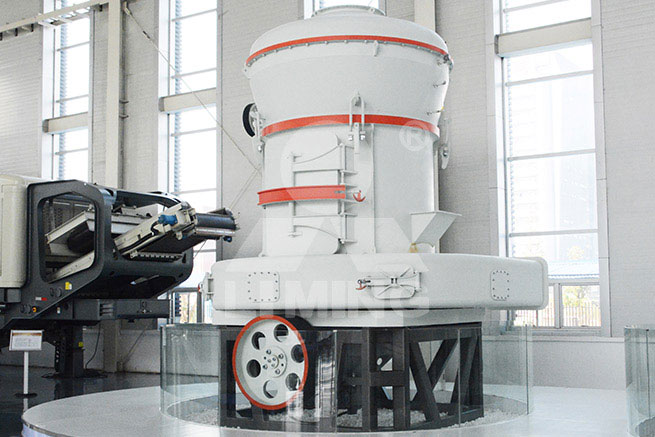aggregate sand particles

The influence law of concrete aggregate particle size on ...
2021-11-22 · The air-dried sand particles then were distributed as evenly as possible within a certain sampling range (fine aggregate sampling range 5 cm × 5 cm and coarse aggregate sampling range 15 cm × 15 ...
Read More

Fine Aggregate Sand - Vinland Materials
Sand is a naturally occurring granular material composed of finely divided rock and mineral particles. It is defined by size, being finer than gravel and coarser than silt. The composition of Sand varies, depending on the local rock sources and
Read More

Particle Aggregate - an overview | ScienceDirect Topics
Particle Aggregate. Should the particles aggregate or ripen in the first place and then grow, repulsive interaction energy between aggregates or particles strengthens and the aggregates “self-stabilize” against coagulation into the primary minimum. From: Handbook of Surfaces and Interfaces of Materials, 2001. Download as PDF.
Read More

Effect of fine aggregate size on the overlapping of ...
2020-7-10 · Original microstructure generation: the microstructure was simulated via randomly distributing sand particles into a cubic container with 2000 pixels × 2000 pixels in size and the pixels size is set to be 0.02 mm. To simplify the calculation, the sand particles were represented by the circles and the 2D microstructure was adopted. According to Eq.
Read More

Fine Aggregates: Types, Properties & Uses in construction
Fine aggregates are basically natural sand particles from the land through the mining process, the fine aggregates consist of natural sand or any crushed stone particles that are ¼” or smaller. This product is often referred to as 1/4’” minus as it refers to
Read More

Aggregates for Concrete
2017-8-5 · which aggregate particles are embedded. Aggregate is granular material such as sand, gravel, crushed stone, blast-furnace slag, and lightweight aggregates that usually occupies approxi-mately 60 to 75% of the volume of concrete. Aggregate properties significantly affect the workability of plastic
Read More

What Is Fine Aggregate | Types of Fine Aggregates ...
2022-1-27 · Fine aggregates are essentially any natural sand particles won from the land through the mining process. Fine aggregates consist of natural sand or any crushed stone particles that are ¼” or smaller.This product is often referred to as 1/4’” minus as it refers to the size, or grading, of this particular aggregate.
Read More

Aggregates for Use In Concrete
2016-3-1 · quarry and the particular deposit. When sand containing lignite is used in making concrete, lignite particles near the surface can expand and cause the pop outs. Lignite is often referred to as brown coal, it is the lowest rank of coal quality. Item Mass % of Total Sample Clay lumps and friable particles 3.0 Material finer than 75 micron (No. 200)
Read More

Soil Aggregates - an overview | ScienceDirect Topics
Mark R. Sweeney, in Reference Module in Earth Systems and Environmental Sciences, 2020 3.2 Aggregate disintegration. Soil aggregates composed of clay, silt, and sand can form by natural processes, but are also common in cultivated fields where they are produced by the mechanical disturbance of soils (Zobeck, 1991b).Sand-sized aggregates that become entrained by the
Read More

Dust Suppression for Aggregate | BossTek
Aggregate Dust Suppression for Mines & Quarries In most climates, processing stone, sand and gravel can produce extreme amounts of dust. Daily activities of mining, crushing, storing and transporting material expose the potential for fugitive particles to escape into the air and become problematic for employees, equipment and surrounding communities.
Read More

Fine Aggregate Sand - Vinland Materials
Sand is a naturally occurring granular material composed of finely divided rock and mineral particles. It is defined by size, being finer than gravel and coarser than silt. The composition of Sand varies, depending on the local rock sources and
Read More

Aggregates for Concrete
2017-8-5 · which aggregate particles are embedded. Aggregate is granular material such as sand, gravel, crushed stone, blast-furnace slag, and lightweight aggregates that usually occupies approxi-mately 60 to 75% of the volume of concrete. Aggregate properties significantly affect the workability of plastic
Read More

Aggregates for Concrete - Memphis
2021-8-9 · left is filled with large aggregate particles of uniform size (AASHTO M 6/ M 80) plus an additional six more coarse aggregate size numbers. Fine aggregate or sand has only one range of particle sizes for general construction and highway work. The grading and grading limits are usually expressed as the percentage of material passing each sieve ...
Read More

Aggregate | Tokyo Cement
2022-2-5 · The technical process of manufacturing M-sand gives the sand particles a rough cubical shape with rounded off edges, allowing it to create stronger bonds between the cement and the coarse aggregate. This same technology allows the manufactured sand grains to be graded, so that a specific size distribution can be maintained.
Read More

Fine Aggregates – BoDean
Fine aggregates consist of natural sand or any crushed stone particles that are ¼” or smaller. This product is often referred to as 1/4’” minus as it refers to the size, or grading, of this particular aggregate. Fine aggregates are available through BoDean Company in ¼” minus, C33, Mark West Quarry Clay and “Quarry Fines”.
Read More

EVALUATION OF PARTICLE SHAPE AND TEXTURE OF
2021-12-26 · manufactured sand. Both these factors relate to the shape and texture of the aggregate particles. One of the objectives of this paper was to study the effect of crushed particle count on the particle shape and texture index (ASTM D3398) of gravel coarse aggregate and to
Read More

Aggregates for Use In Concrete
2016-3-1 · quarry and the particular deposit. When sand containing lignite is used in making concrete, lignite particles near the surface can expand and cause the pop outs. Lignite is often referred to as brown coal, it is the lowest rank of coal quality. Item Mass % of Total Sample Clay lumps and friable particles 3.0 Material finer than 75 micron (No. 200)
Read More

Section 902 AGGREGATES - mdotjboss.state.mi.us
particles of sand free from clay lumps, and soft or flaky granular material resulting from the natural disintegration of rock, and used in concrete mixtures, mortar mixtures, and intrusion grout for pre-placed aggregate concrete. Stone Sand 2SS. Sand manufactured from stone sources. These stone sources must meet the physical requirements for coarse
Read More

Dust Suppression for Aggregate | BossTek
Aggregate Dust Suppression for Mines & Quarries In most climates, processing stone, sand and gravel can produce extreme amounts of dust. Daily activities of mining, crushing, storing and transporting material expose the potential for fugitive particles to escape into the air and become problematic for employees, equipment and surrounding communities.
Read More

PHYSICAL PROPERTIES OF AGGREGATES
2005-9-20 · Physical Properties of Aggregates 4 Coarse Aggregate Angularity • Measured on + 4.75 mm material • Based on fractured faces – fractured surface larger than 25% of aspect ratio • ASTM D 5821 • Specification requirements depend on: – depth of layer within pavement
Read More

Fine Aggregate Sand - Vinland Materials
Sand is a naturally occurring granular material composed of finely divided rock and mineral particles. It is defined by size, being finer than gravel and coarser than silt. The composition of Sand varies, depending on the local rock sources and
Read More

Aggregates for Concrete
2017-8-5 · which aggregate particles are embedded. Aggregate is granular material such as sand, gravel, crushed stone, blast-furnace slag, and lightweight aggregates that usually occupies approxi-mately 60 to 75% of the volume of concrete. Aggregate properties significantly affect the workability of plastic
Read More

Aggregate | Tokyo Cement
2022-2-5 · The technical process of manufacturing M-sand gives the sand particles a rough cubical shape with rounded off edges, allowing it to create stronger bonds between the cement and the coarse aggregate. This same technology allows the manufactured sand grains to be graded, so that a specific size distribution can be maintained.
Read More

Aggregates for Use In Concrete
2016-3-1 · quarry and the particular deposit. When sand containing lignite is used in making concrete, lignite particles near the surface can expand and cause the pop outs. Lignite is often referred to as brown coal, it is the lowest rank of coal quality. Item Mass % of Total Sample Clay lumps and friable particles 3.0 Material finer than 75 micron (No. 200)
Read More

EVALUATION OF PARTICLE SHAPE AND TEXTURE OF
2021-12-26 · manufactured sand. Both these factors relate to the shape and texture of the aggregate particles. One of the objectives of this paper was to study the effect of crushed particle count on the particle shape and texture index (ASTM D3398) of gravel coarse aggregate and to
Read More

Difference Between Fine and Coarse Aggregate - Civil ...
2022-2-7 · Size of Particles: Fine aggregates are the particles that pass through 4.75 mm sieve and retain on 0.075 mm sieve. Coarse aggregates are the particles that retain on 4.75 mm sieve. 3: Materials: Sand, surki, stone screenings, burnt
Read More

Section 902 AGGREGATES - mdotjboss.state.mi.us
particles of sand free from clay lumps, and soft or flaky granular material resulting from the natural disintegration of rock, and used in concrete mixtures, mortar mixtures, and intrusion grout for pre-placed aggregate concrete. Stone Sand 2SS. Sand manufactured from stone sources. These stone sources must meet the physical requirements for coarse
Read More

CLAY LUMPS AND FRIABLE PARTICLES IN AGGREGATE
2021-8-20 · CLAY LUMPS AND FRIABLE PARTICLES IN AGGREGATE AASHTO T 112 SCOPE To ensure the aggregate used performs as intended for highway construction, several tests are performed to determine the physical characteristics of the material. One of these tests is the determination of Clay Lumps and Friable Particles in Aggregate.
Read More

Aggregate: Mechanical Properties of Aggregate | Concrete ...
2022-2-4 · The moisture in the fine aggregate develops a film of moisture around the particles of sand and due to surface tension pushes apart the sand particles, occupying greater volume. The bulking of the sand affects the mix proportion, if mix is designed by volume batching.
Read More

Properties of aggregates- Physical properties, Chemical ...
Aggregate meaning. In the field of construction, the term “Aggregates” simply represent materials like sand, crushed stones, broken bricks, gravel, chips, etc. which are used in the manufacture of traditional cement concrete, asphalt concrete, or various other composite building materials.
Read More
- << Previous:Global Crushers And Spares
- >> Next:Iron Ore Pelletizing Equipment


